Scoping Call Of Duty: Modern Warfare Performance At 4K With NVIDIA DLSS 2.0
For those not in the know, NVIDIA's DLSS 2.0 uses artificial intelligence and machine learning to up-sample a lower resolution, giving gamers a boost in performance while offering image quality that's comparable to gaming at a higher [native] resolution. The performance uplift offered by DLSS 2.0 is made possible by the specialized Tensor cores found in GeForce RTX hardware in conjunction with the AI/ML algorithms and hooks incorporated into the game.
For example, when using a 4K Balanced setting with DLSS 2.0, the resulting image quality should look similar to native 4K resolution, while actually rendering a resolution closer to 1440p. Running with the 4K Performance setting would render the game at 1080p before performing its magic. In addition to the intelligent upscaling, NVIDIA applies anti-aliasing and automatic sharpening to clean up the images and reduce artifacts.
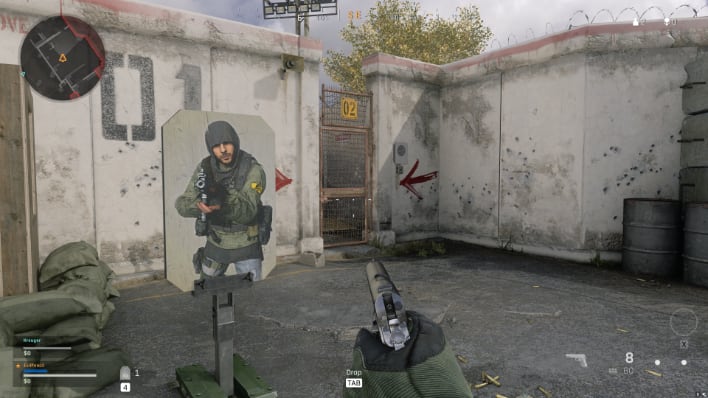
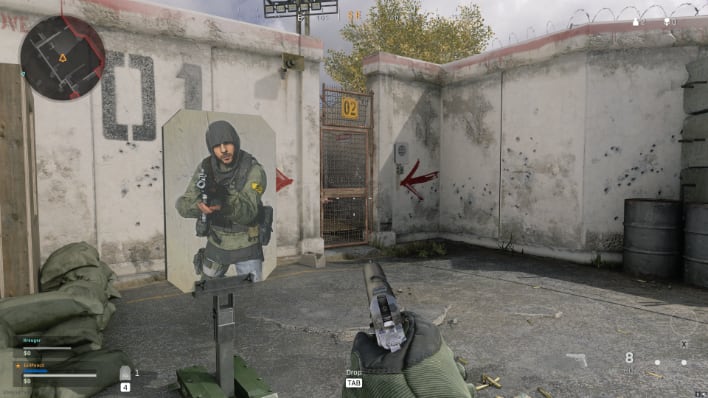
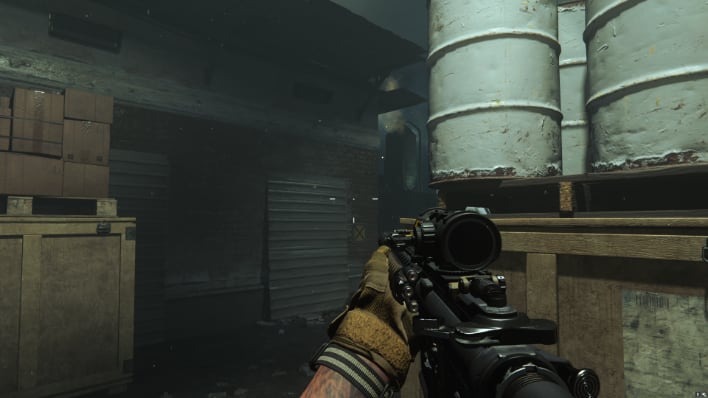
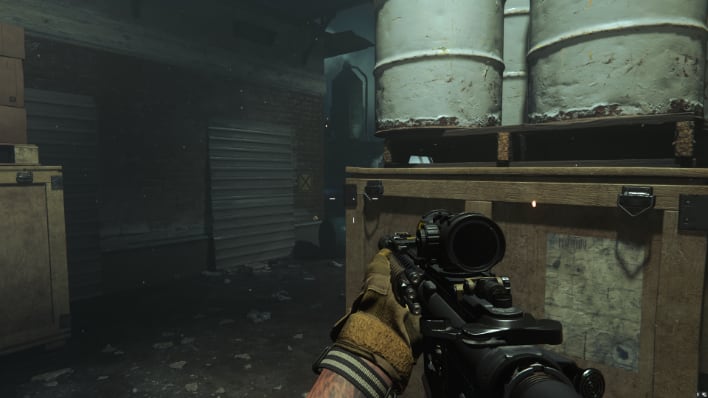
In the case of Call of Duty: Warzone, NVIDIA claims that using a test rig featuring an Intel Core i9-10900K with a GeForce RTX 3070, you can hit 116+ fps with 4K Performance versus 74 fps natively running at 4K.
We decided to perform our own tests using a 12-core/24-thread AMD Ryzen 5900X with 32GB of DDR4-3600 memory running Windows 10 Pro 20H2. We used three different GeForce RTX graphics cards: one last generation card and two current generation mainstream offerings.
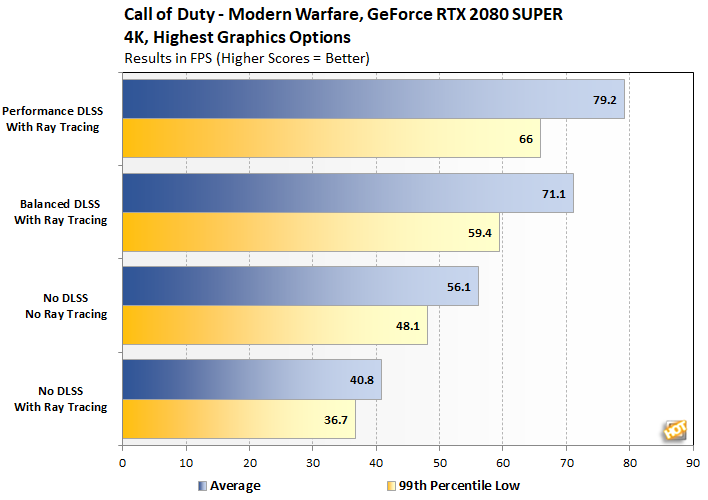
Starting things off with the previous generation GeForce RTX 2080 Super, we saw average frames rates jump from 40.8 fps with ray tracing enabled running natively at 4K with all graphics goodies turned on. Switching to 4K Balanced DLSS 2.0 with ray tracing boosted those numbers to 71.1 fps. Moving to 4K Performance mode with ray tracing increased those numbers yet again to 79.2 fps.
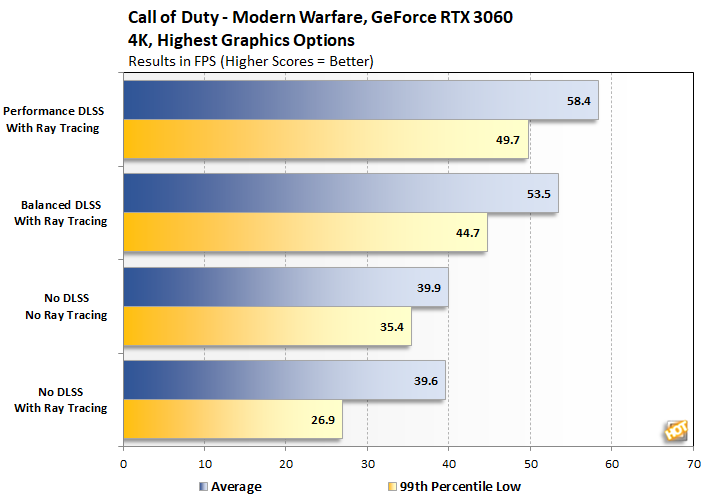
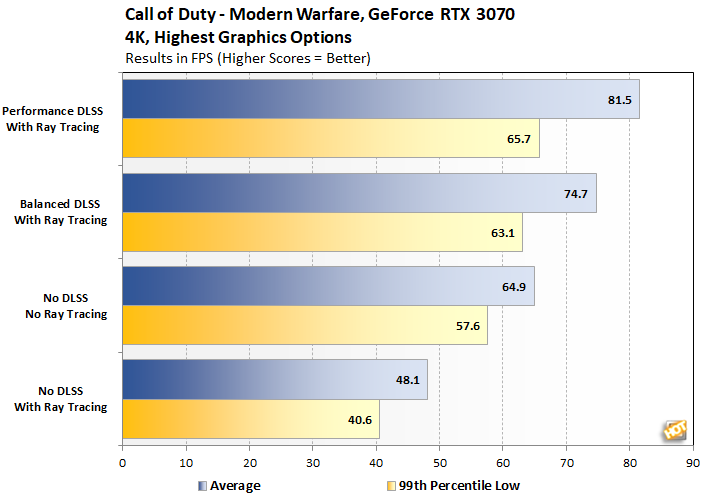
As for the current generation of Ampere-based cards, you can see similar leaps in performance. The GeForce RTX 3060 got a 46 percent performance boost going from 39.9 fps with native 4K and ray ray tracing involved to nearly 59 fps with 4K Performance mode enabled. Likewise, we were able to match NVIDIA's claimed 70 percent uplift using 4K Performance DLSS 2.0 in Call of Duty: Modern Warfare with the GeForce RTX 3070.
We have posted images above so you can see the difference between running the game natively at 4K and with 4K Performance DLSS 2.0. We had a hard time telling the difference between them without inspecting them at the pixel level. For most people, however, the image quality improvements and performance associated with enabling DLSS 2.0 versus running the game natively at 4K are well worth it.




